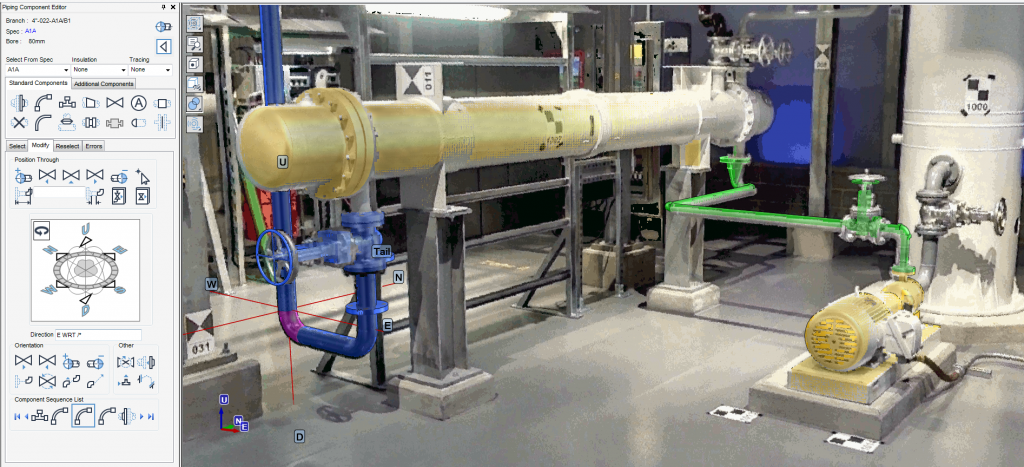This is the second article of a three part series on how Synergy uses laser scan data to generate smart as-built 3D models. The example model used in this article is from Eaton’s training facility in Houston and is supplied courtesy of LFM Software and AVEVA. Disclosure: Synergy was an official beta tester for AVEVA Laser Modeler during its development phase in 2011. Also see Part 1.
In the standard approach for as-building 3D models from laser scans, the laser scan point cloud is converted into 3D model objects via a process called “back-modelling”.

The 3D model objects can then be hyperlinked to external data such as project documents and drawings, site survey photos and maintenance records.
While the standard approach produces a fully intelligent 3D model representation of the plant capable of generating 2D drawings (e.g. isometrics and general arrangements), material take-offs, weight reports, etc, the back-modelling process is time consuming and can therefore be expensive.
Moreover, depending on the end-user’s application, a full 3D model may not even be necessary. For example, if the end-user has no intention of generating 2D drawings from the model and is using the 3D model exclusively for plant operation and Brownfield modifications, then a full 3D model may be superfluous and a partially intelligent model could suffice. This is the aim of the “lite” approach.
The Lite Approach
In the lite approach, only partial intelligence is added to the laser scan point cloud. Partial intelligence means adding hotspot hyperlinks to equipment and piping in the point cloud in order to:
- Provide tag numbers and equipment descriptions / information
- Provide links to external data such as equipment data sheets, P&IDs, site survey data, etc
This gives users relevant information and guidance while walking through / inspecting the laser scan point cloud, with the information presented inside the model right at the point of use. Therefore, users do not need to refer to external information (e.g. drawings) to search for and/or identify equipment in the model. This is particularly beneficial for users that are not already familiar with the plant.

Since there are no back-modelling requirements, the lite approach is significantly faster and more cost-effective to implement. Once finished, the partially intelligent model is ready for any future addition works such as:
- Importing 3D design models and overlaying onto the laser scanned data so as to allow comparisons between the As built laser scan and design model
- Conversion to a fully intelligent 3D model
See also
